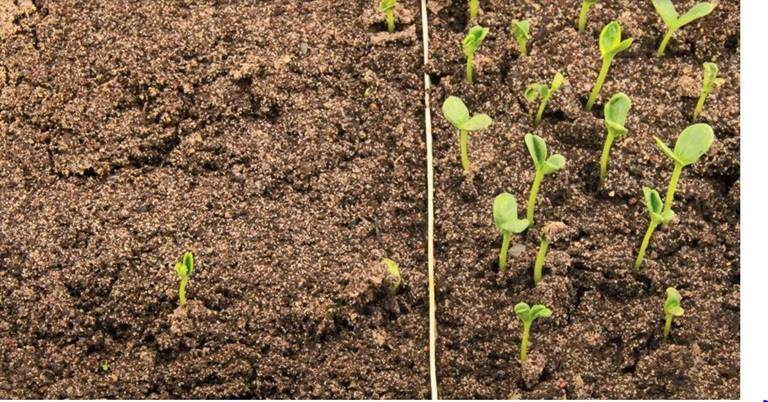The 3 standard techniques for seed priming

1. Osmopriming
The term “priming of seed” was coined by the biologist Malnassy (1971). His colleague Heydecker (1973-1974) used osmotic seed treatments to control application of moisture, with the aim of enhancing internal seed processes to improve germination. An osmotic seed treatment means that seeds are submerged in an osmotic solution, in other words a solution with a decreased water potential, by salts (also called halo-priming), by sugars, or by a long-chained polyethylene glycol (PEG).
Each compound has its advantages and disadvantages. Many salts dissolve well, and the concentration can easily be calculated into water potential, however, some may cause damage. Similarly for sugars, but these have the disadvantage that micro-organisms are fond of sugars and may develop very fast during the priming process. Polyethylene glycols with a high molecular weight take a little longer to dissolve, are less easily converted into water potential and the solution, with a high viscosity, does not easily transport oxygen. However, polyethylene glycol is not absorbed by the seed and thus does not cause any damage.
During the priming, the supply of oxygen is of great importance, since the seeds become physiologically active. When the priming is finished, the priming solution must be rinsed off thoroughly, after which the seed can be dried.
2. Matrix priming
Another way to control the moisture level of a seed is solid matrix priming. The solid material binds water to a certain extent, and by a controlled ratio between seed, solid material and water, the moisture level of the seed after equilibration is set. Solid matrix priming can be done in a rotating drum, but also in a static environment. The advantage is that the mixture of solid material and seed is effectively penetrable for air, so the seeds have a good supply of oxygen. A small disadvantage is the extra step of screening after the priming, since the matrix material has to be separated from the seed. This separation can be done directly after the priming, although it is more common to first dry the seed and then screen the solid matrix material out.3. Drum priming
In drum priming, no compounds are used to control the availability of water to the seed. Instead, before the start of the priming, you need to determine the moisture content of the seed. Once you know the optimal moisture level for priming, the difference can be calculated and added to the seed. Usually, the seed is moving in a rotating drum, which ensures an even distribution of the moisture over the seed mass during the whole priming period. With a hole in the drum, the supply of air to the seed is well assured.
After the priming, the seed can be dried without any other processing steps as needed in the osmopriming and the solid matrix priming.
Depending on the species and its germination characteristics, one of these priming techniques may be preferable. It takes knowledge, experience and creativity to determine the optimal method for priming a certain species.
In all primings, compounds can be added to the water for extra stimulation of the germination processes. Compounds that can be added to affect the germination processes are plant hormones (like gibberellic acid or auxins), stimulants (potassium nitrate) and scarification agents (thiourea). Over the last years, many more compounds have been mentioned in the literature, but most of these are intended to stimulate seedling growth and development, and not germination per se.
New techniques
Besides the three standard priming techniques several new techniques have been described. I will write about these new techniques in my next article.
Henry Bruggink is senior research scientist at Incotec in Enkhuizen, the Netherlands. Henry specializes in priming. Recently he contributed a chapter of the book Advances in seed science and technology for more sustainable crop production, by Dr. Julia Buitink and Professor Olivier Leprince.
